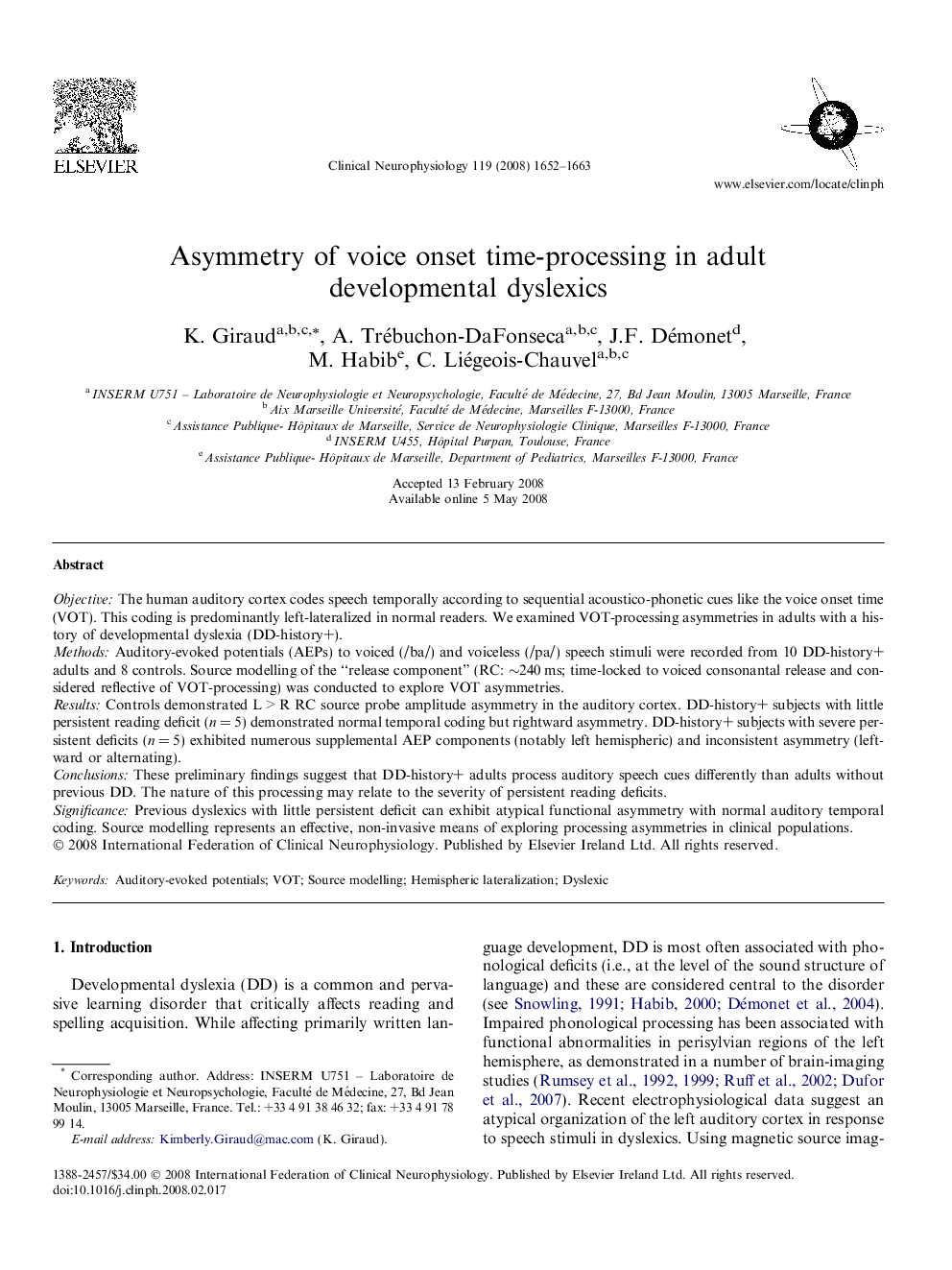| Article ID | Journal | Published Year | Pages | File Type |
|---|---|---|---|---|
| 3047321 | Clinical Neurophysiology | 2008 | 12 Pages |
ObjectiveThe human auditory cortex codes speech temporally according to sequential acoustico-phonetic cues like the voice onset time (VOT). This coding is predominantly left-lateralized in normal readers. We examined VOT-processing asymmetries in adults with a history of developmental dyslexia (DD-history+).MethodsAuditory-evoked potentials (AEPs) to voiced (/ba/) and voiceless (/pa/) speech stimuli were recorded from 10 DD-history+ adults and 8 controls. Source modelling of the “release component” (RC: ∼240 ms; time-locked to voiced consonantal release and considered reflective of VOT-processing) was conducted to explore VOT asymmetries.ResultsControls demonstrated L > R RC source probe amplitude asymmetry in the auditory cortex. DD-history+ subjects with little persistent reading deficit (n = 5) demonstrated normal temporal coding but rightward asymmetry. DD-history+ subjects with severe persistent deficits (n = 5) exhibited numerous supplemental AEP components (notably left hemispheric) and inconsistent asymmetry (leftward or alternating).ConclusionsThese preliminary findings suggest that DD-history+ adults process auditory speech cues differently than adults without previous DD. The nature of this processing may relate to the severity of persistent reading deficits.SignificancePrevious dyslexics with little persistent deficit can exhibit atypical functional asymmetry with normal auditory temporal coding. Source modelling represents an effective, non-invasive means of exploring processing asymmetries in clinical populations.
